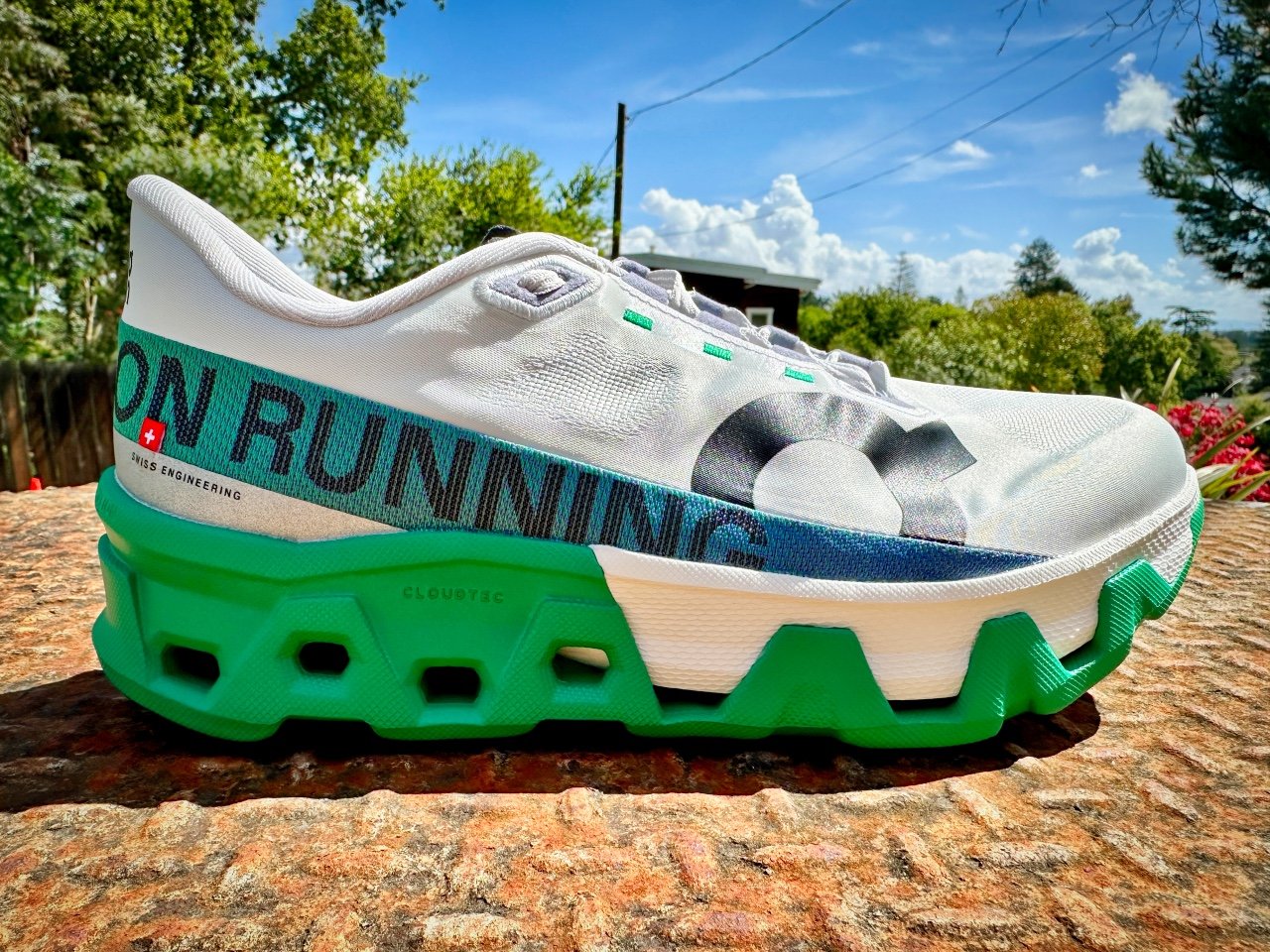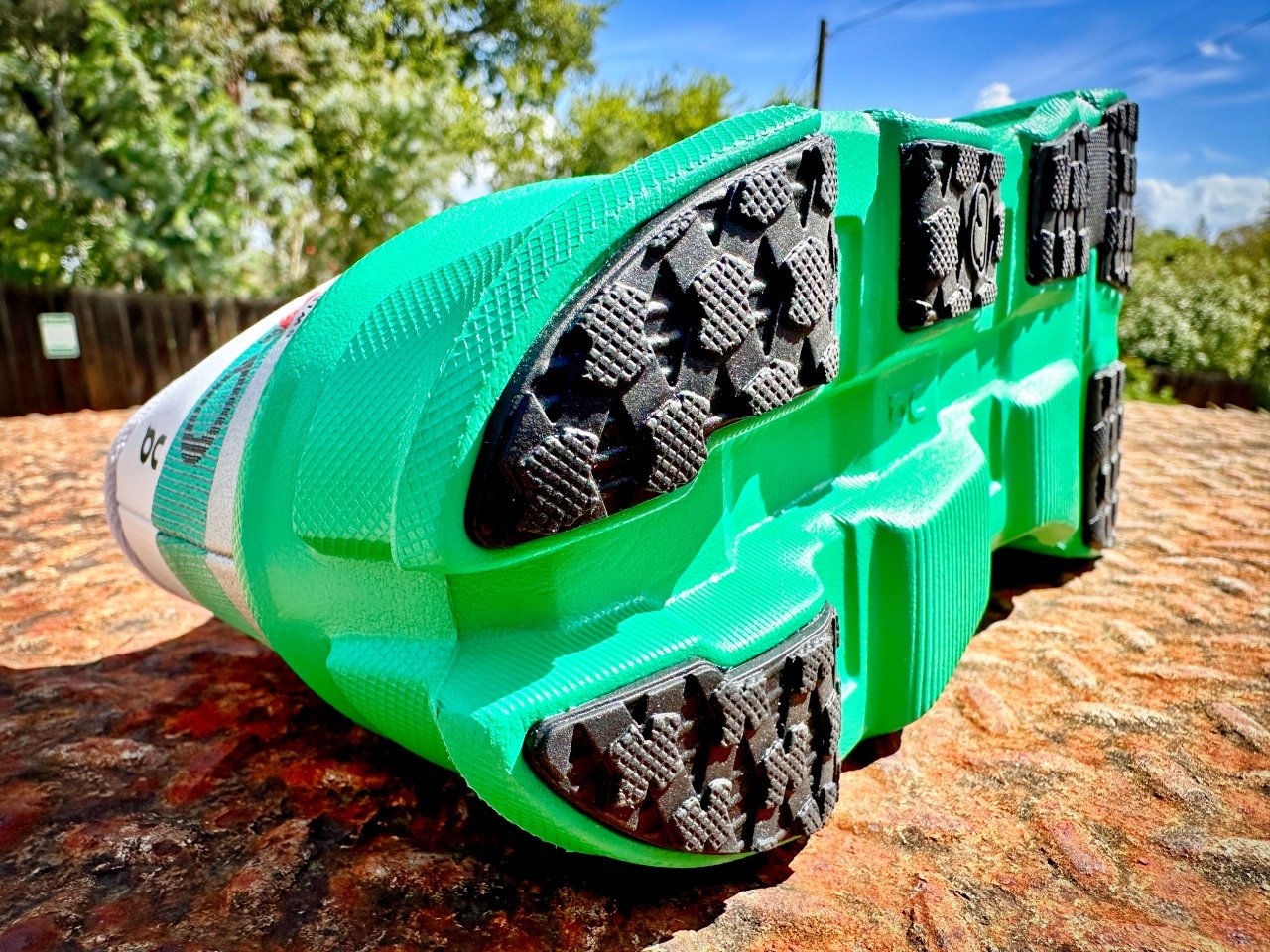ON On Cloudmonster Hyper review
ON On Cloudmonster Hyper Verdict
The pros
- Feels similar to the Cloudboom Echo 3
- Smooth ride transitions
- Excellent, grippy laces
- Very little ground feel
The cons
- Arch pressure if you have flat feet
- Not much energy return
- Heavily overpriced
Rating breakdown
Facts / Specs
Size/Fit
Cushioning & ride
Usage
Who should buy the ON On Cloudmonster Hyper ?
If you want a medium-firm trainer which has a similar ride to the Cloudboom Echo 3, the Cloudmonster Hyper is a good option.
If you find the normal Cloudmonster too firm in the forefoot or you want even more cushioning, the Cloudmonster Hyper would work for you.
Who should not buy the ON On Cloudmonster Hyper ?
If you’re looking for a really energetic, agile trainer, the Cloudmonster Hyper is not for you. If you have flat feet and sensitive arches, it’s also not the shoe for you.
ON On Cloudmonster Hyper Introduction

Super trainers are a way for brands to charge a higher price for training shoes and to showcase some of the technologies that feature in their flagship racing shoes in a lower price tier product. While most brands already have a super trainer (some brands even have 2), the Cloudmonster Hyper is On’s first.
The Cloudmonster Hyper is a spinoff series of one of their most popular trainers, the Cloudmonster. The Hyper is lighter and has a more premium design than the Cloudmonster with a thicker midsole. Its price is $220, $40 more than the regular Cloudmonster.
Super trainers are normally priced between a max-cushioned trainer and a super shoe, in the $160-$200 price range. On is a rare brand that doesn’t care about being overpriced. They have shoes that people want and they know that people are willing to pay a premium for their products.
Over the years, we’ve seen other brands also piggyback on the success of their really popular trainers’ names. Saucony created the Kinvara Pro, Nike created the Pegasus Turbo and Brooks the Ghost Max. Most of these spinoff series feel nothing like the original versions.
With the Cloudmonster Hyper, On has decided to ride on the success of the Cloudmonster series (which has been one of my favourite On trainers) instead of creating a brand new series.
ON On Cloudmonster Hyper First Impressions

My first run was a 25 kilometre easy-paced Sunday morning run. My first thought was that it felt nothing like the Cloudmonster. I couldn’t feel the pods compress with each foot strike like I did with the original Cloudmonster. The ride felt smoother and the forefoot cushioning felt more substantial.
The Cloudmonster Hyper reminded me more of the Cloudboom Echo 3 than the Cloudmonster. Both of them have Helion HF foam in their midsoles which delivers a firm yet slightly energetic ride.
ON On Cloudmonster Hyper Upper

The Cloudmonster Hyper’s upper reminds me a lot of the Cloudboom Echo 3. They are made from the same thin, smooth mesh which doesn’t stretch. Breathability is average and nothing to write home about.
My favourite part of the shoe are the laces which are woven with silicone. The laces feel sticky when tying them up and they grip each other really well to stay tied. I find the laces a bit too long for my narrow feet though because the loops almost touch the ground.
The thin tongue is fully gusseted and doesn’t slide around. Foot lockdown is also excellent and there’s no heel slippage.
The fit is really accommodating in the forefoot and toe box but it has a narrow midfoot with a prominent arch that you can feel if you have flat feet. The fit is true to size but if you prefer a snug fit, you can go down a half size because of the extra volume. It’s best suited to high volume feet with high arches.
ON On Cloudmonster Hyper Sole Unit

The ride of the Cloudmonster Hyper feels a bit bland. You don’t get the unique feeling of the pods collapsing under your feet like in the regular Cloudmonster and it doesn’t feel particularly energetic. It also doesn’t have a very prominent forefoot rocker.
The Helion HF foam in the forefoot and core of the Cloudmonster Hyper doesn’t compress as much as other Pebax foams and it’s also not that light so it doesn’t feel like a super trainer. It feels like a normal, every day trainer for racking up miles.
The Cloudmonster Hyper suits midfoot and forefoot strikers more than heel strikers because there’s a big difference in softness between the forefoot and the rearfoot. There’s a larger concentration of Helion HF in the forefoot so it’s much more pleasant when you’re forefoot striking.
I’m a natural heel striker and whenever I run in the Cloudmonster Hyper, I try to concentrate on striking on my forefoot, similar to when I’m running in the Pegasus and trying to land on its forefoot airbag.
One of the major differences between the Hyper version and the regular Cloudmonster is that there is no Speedboard in the Hyper. You’d think that this would result in a much more flexible, more natural ride but because the Hyper’s midsole is so thick, it does not flex much, similar to the ASICS Superblast.

The Cloudmonster Hyper is designed to be a versatile trainer and while it does feel faster than the regular Cloudmonster, it doesn’t feel as fast as other super trainers like the Hoka Mach X, Kinvara Pro, Superblast or even the Rebel v4 which is much, much cheaper.
For me, it’s best suited to steady-paced runs between 4:30 minutes per km and 5:30 per km. For slower paces I feel that it’s not soft enough and it feels blocky. Anything faster and it doesn’t feel effortless to hold a fast pace (below 4:30 per km). It has a deeply cushioned ride and it can be used for running a full marathon if you enjoy a firm ride.
The outsole is not flat so the raised parts on the rearfoot take more impact during foot strikes. The outer rubber lugs of both of my shoes are smooth after 80 kilometres so outsole durability is below average in my experience. Traction is good and I never experienced any issues, even on wet roads.
ON On Cloudmonster Hyper Conclusions

I feel like there’s something missing whenever I run in Cloudmonster Hyper. It doesn’t feel as engaging as other super trainers, mainly because its midsole is so firm.
It’s the same price as some fast carbon-plated racing shoes but it feels like an ordinary daily trainer, not like a super trainer. There’s nothing special about it to warrant its $220 price.
The Helion HF Pebax in its midsole needs to be improved to deliver more energy return because right now, it feels like regular EVA. It also needs to have a more prominent forefoot rocker in order to make it feel more efficient.
The Cloudmonster Hyper is another example of a spinoff series which doesn’t feel anything like the original. It would have made more sense to give it a similar name to the Cloudboom Echo 3, On’s flagship racer because they have similar uppers and they both have Helion HF in their midsoles.
Compared to other super trainers, the Cloudmonster Hyper is far behind in terms of energy return, efficiency, innovation and overall enjoyment. There are many other super trainers which are cheaper, lighter, faster and more energetic.
How does the On Cloudmonster Hyper compare?
Why you can trust us
As editorial policy, we do not accept free samples from companies.We purchased this pair of ON at Running Warehouse with our own money.
This page contains affiliate links. As an Amazon Associate we earn from qualifying purchases. Read more about our policy.
Reviewed by Brandon
Brandon is a South African who lives and trains in Malaysia. He is a marathon runner who eats, sleeps and dreams running shoes. While most people wear shoes to run, he runs to wear shoes.
User feedback (0)
Similar shoes to ON On Cloudmonster Hyper


On Cloudrunner 2 Review


On Cloudmonster 2 Review




















